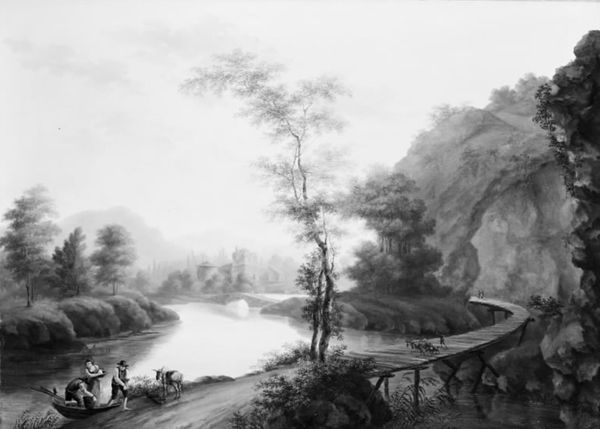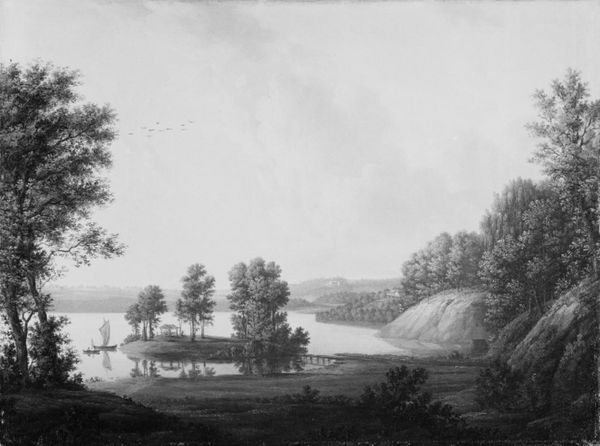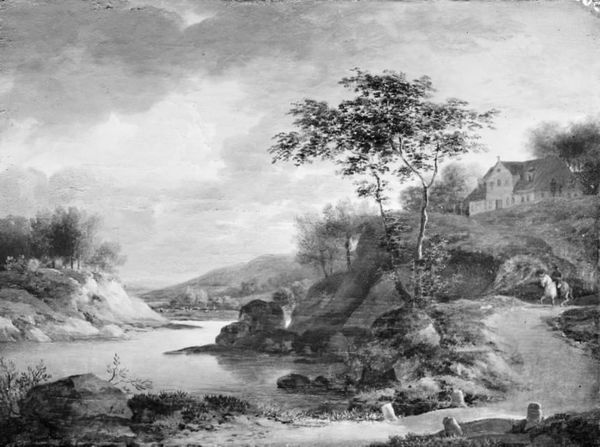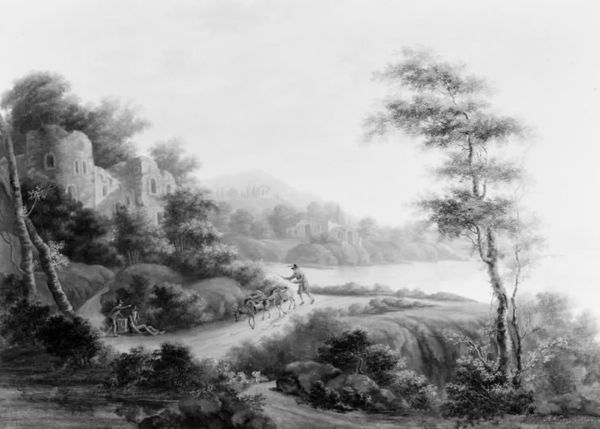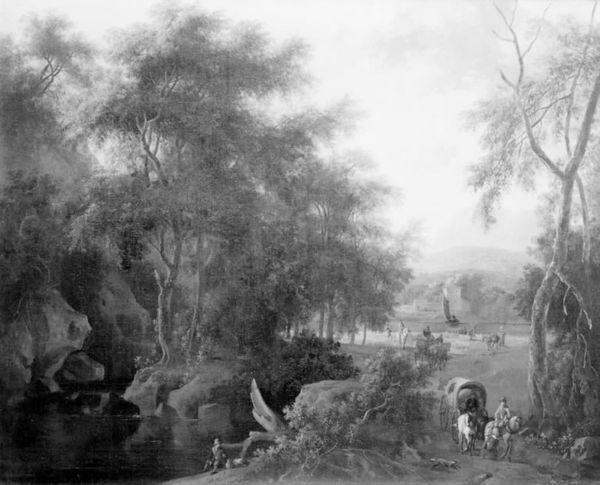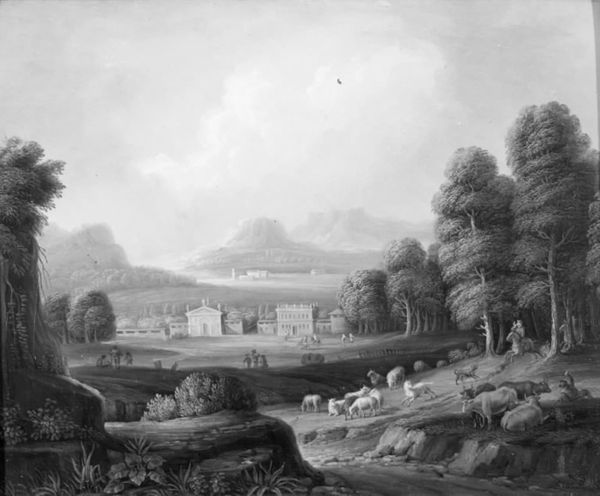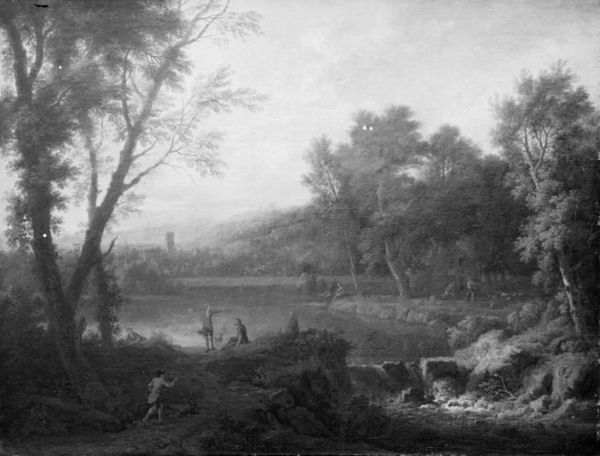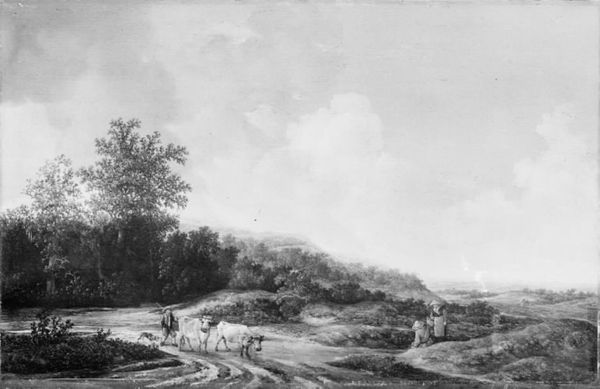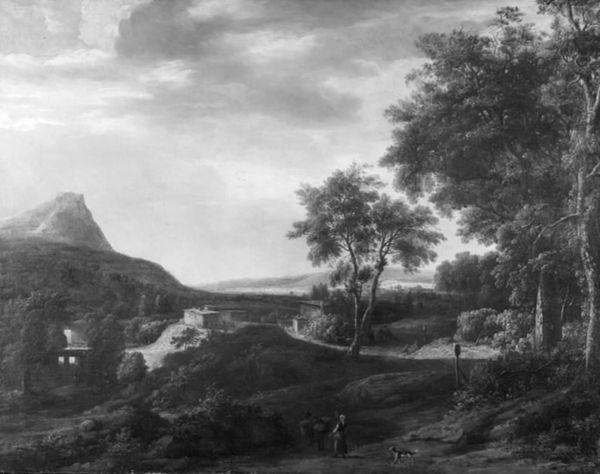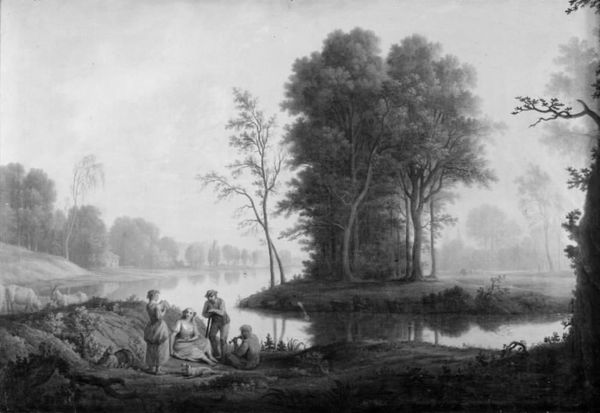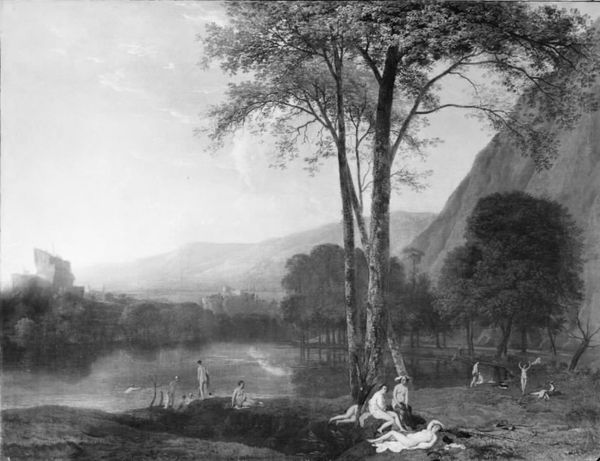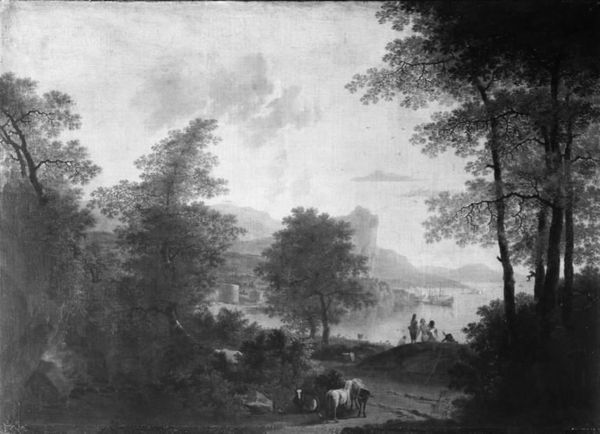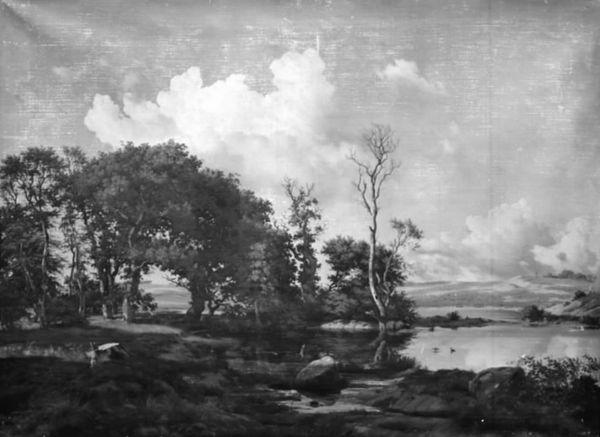
painting, oil-paint, wood
#
painting
#
oil-paint
#
landscape
#
romanticism
#
wood
#
academic-art
#
monochrome
#
monochrome
Dimensions: 25 cm (height) x 34.5 cm (width) (Netto)
Editor: Here we have Jens Juel's "Arcadian Landscape. Motif from Baia in Italy" painted in 1791, using oil on wood. I'm immediately struck by the serenity, it's almost dreamlike in its monochrome palette. What elements jump out to you when you view this piece? Curator: What intrigues me is how Juel uses landscape, not just as scenery, but as a stage for cultural aspirations. The title itself gestures towards Arcadia, a symbolic, idealized version of pastoral life deeply embedded in the 18th-century imagination. This imagined perfection acted as a counterpoint to the era’s turbulent social and political realities. How do you think the use of monochrome affects the viewer's perception of this ideal? Editor: It adds a layer of remove, almost like a faded memory. By stripping away the color, does it heighten that sense of an unattainable past, a history that can only be viewed through a filter? Curator: Precisely. And think about where this "memory" is located: Italy. For Northern European artists and intellectuals, Italy represented the cradle of Western civilization. Paintings such as this reflected and further fueled cultural tourism that reinforced socio-economic hierarchies across Europe. Do you notice the figures placed within the landscape? How do they contribute to the overall narrative? Editor: I see figures both relaxing near the water, and others who seem to be actively hunting, perhaps highlighting contrasting aspects of daily life idealized within this Arcadian setting. Are there specific power structures or cultural ideals at play in landscapes from this period? Curator: Absolutely. Landscape painting often served to reinforce ideas of ownership and control. It helped define national identity but it could also reinforce colonialism by presenting exoticized views of other lands ripe for conquest. What do you take away from looking at Juel’s painting within this context? Editor: I am seeing a carefully constructed image that draws from both historical longings and the socio-political currents of its time. It's fascinating how a landscape can be so much more than just a pretty view. Curator: Indeed. Understanding art within its social and historical context transforms our understanding and appreciation, making the visual experience that much richer.
Comments
No comments
Be the first to comment and join the conversation on the ultimate creative platform.
